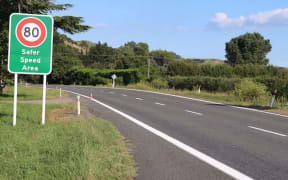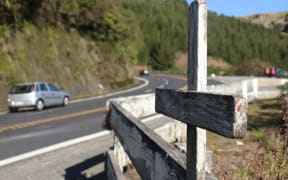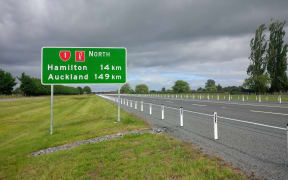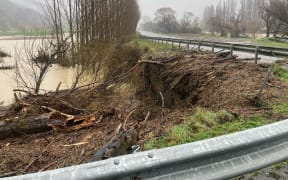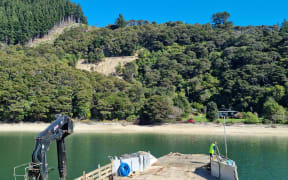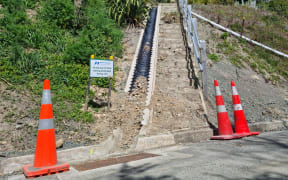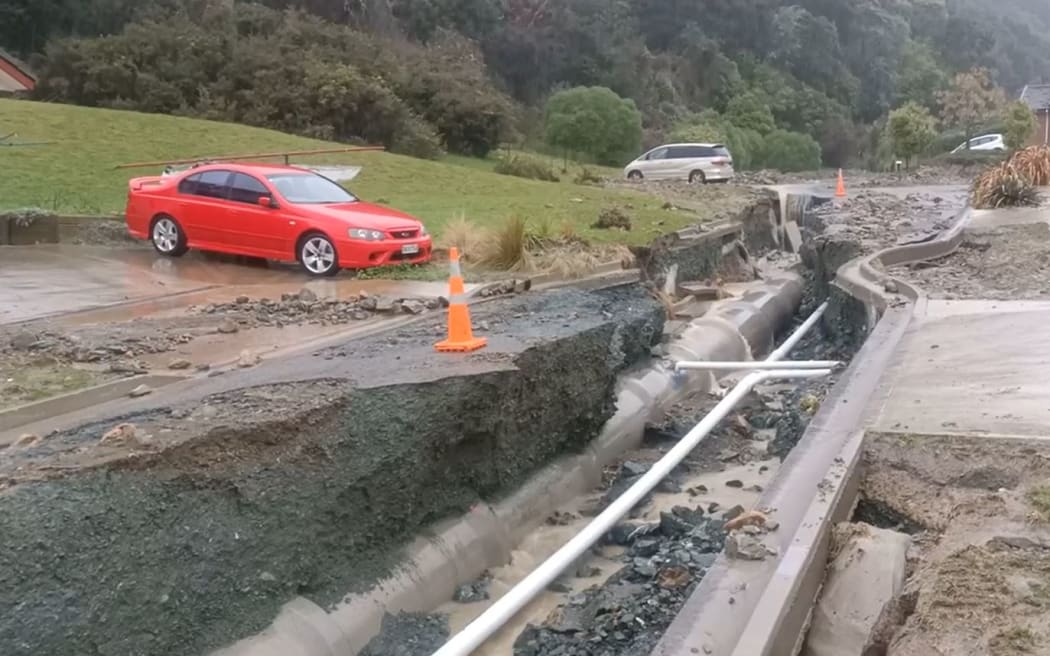
Part of the driver for the revenue drop was that councils such as Nelson's were having to prioritise emergency fix-it works over planned transport projects, Waka Kotahi says. Photo: RNZ / Angus Dreaver / Screenshot
The Transport Agency is in a $600 million hole and cutting spending targets on work including improving local roads and public transport infrastructure.
The squeeze on revenue is occurring alongside another big drop in the amount of work going on.
"Forecasted funding demand is much lower," Waka Kotahi chief executive Nicole Rosie said in an email to mayors.
This has forced its board to change its investment targets, for instance on the government's core Road to Zero strategy, as well as on:
- Public transport infrastructure
- Walking and cycling
- Local road improvements
- Investment management
"The lowering of some investment targets is not the result of Waka Kotahi cancelling or reprioritising any work programmes, it is simply reflecting [lower] forecast demand," Rosie told the councils.
"Many organisations have delayed the start of new projects or are delivering projects at a slower pace than originally forecast because of increased costs, funding pressures and supply disruptions."
At the same time, "project costs are higher than originally expected", she said.
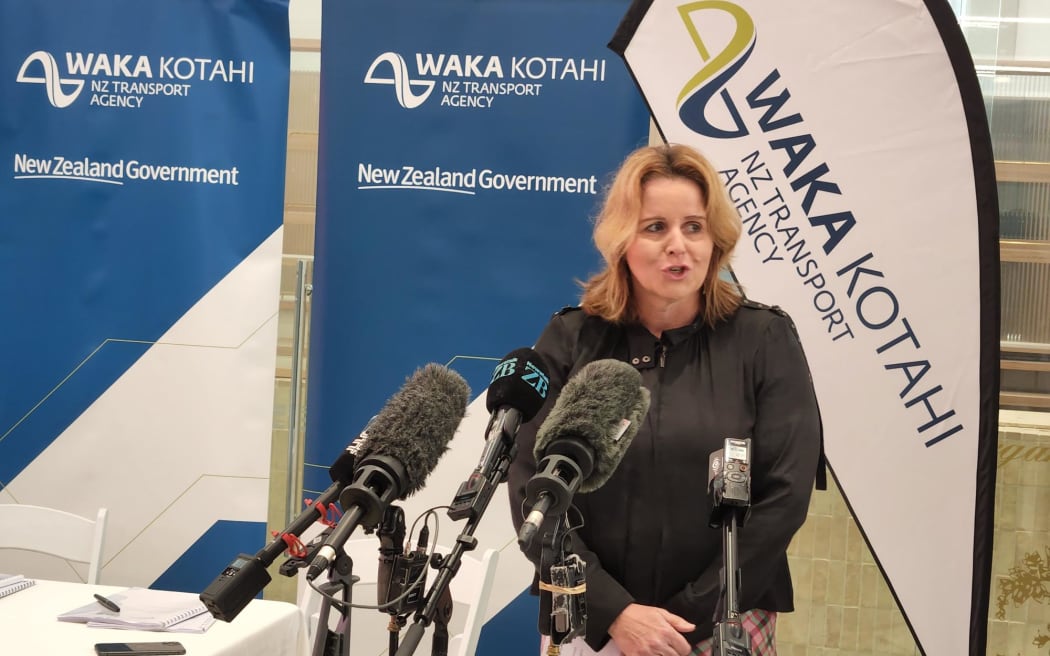
There are several reasons many organisations have delayed the start of new projects or are delivering projects at a slower pace than expected, Nicole Rosie says. Photo: RNZ / Mohammad Alafeshat
The forecast drop in revenue has almost doubled since April when Treasury put it at $350m.
It equates to 5 percent of the total revenues forecast when the 2021-24 National Land Transport Programme was agreed. The NLTP envisaged a record $24 billion spend on transport over the four years.
In total, the board's reduction in the target range for various activity classes amounted to as much as 4.5 percent, or as little as 1 percent, on about $15b on spending.
The wild winter has taken its toll.
Part of the driver for the revenue drop was that councils were having to prioritise emergency fix-it works over planned transport projects, for example addressing slips, a Waka Kotahi spokesperson said.
"Funds [are] being diverted to address urgent, new or increased costs across wider council programmes; and councils [are] changing their priorities, for example, to better address the impacts of climate change."
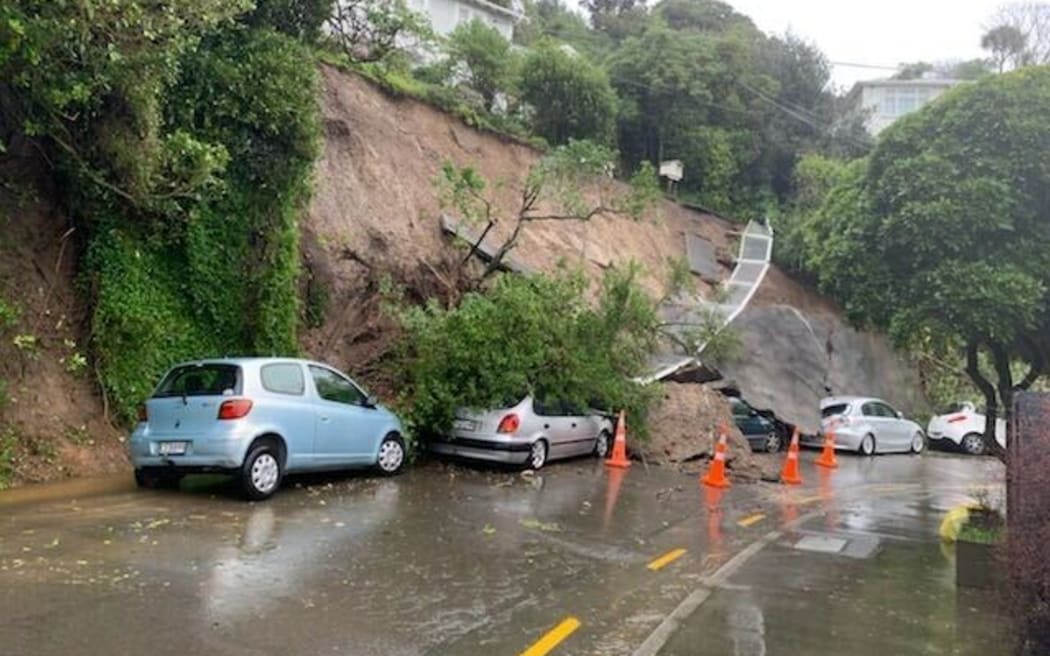
A slip in the Wellington suburb of Melrose over winter. Photo: Supplied
The scale of emergency work meant there would be no cutback in the spending target for maintenance on both highways and local roads. That funding might even rise.
"Should emergency events continue at the same frequency, adjustments may also be required to these activity class targets, potentially resulting in the need to offset across the programme," Rosie wrote.
Investment limits also remain the same on:
- State highway improvements
- Rail
- Coastal shipping
The one area where the investment limit is being lifted is public transport services (as opposed to infrastructure), from $1.33b to a range between $1.37b-$1.48.
These services were costing Waka Kotahi more due to reduced fares revenue under Covid-19, diesel prices and drivers' wages rising, and an extra public holiday.
"We have increased this funding target to ensure we can continue to maintain current services and support the reduction in private vehicle use and carbon emissions," Rosie said.
Changing investment targets was "normal".
"It is important to emphasise that at this stage we expect to be able to fund probable activities and meet all existing commitments."
However, she warned of "high levels of uncertainty" and "ongoing changes to programme delivery".
"It is unlikely we will be able to fund any new activities."
The work that does not get done would probably spill over into the next National Land Transport Programme period of 2024-27, her email said.
"Our investment is targeted at safety," the agency spokesperson told RNZ.
"Across all the activity classes, we're working with councils to help them achieve the best outcomes for their communities."
Waka Kotahi co-funds repairs following storms at its normal assistance rate for local roads, but this is raised by 20 percent if the total damage exceeds one-tenth of a council's entire maintenance programme for the year.
In April, media reports said Treasury had warned the government of further cuts to come as it slashed Waka Kotahi's forecast revenue take by $353m.
Treasury said the government might have to add to the $2b loan it has already given the agency to tide it over.
"We couldn't accept our roads deteriorating," Transport Minister Michael Wood said 14 months ago, about this loan.
He added back then that Road to Zero was a top priority.
The minister has been approached for comment.

